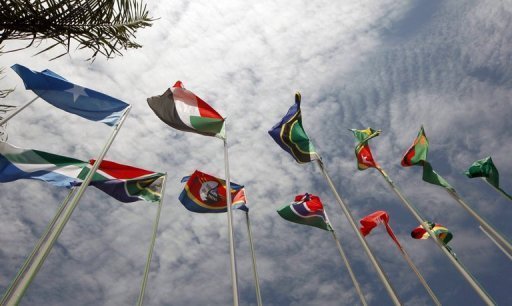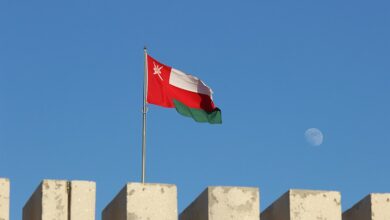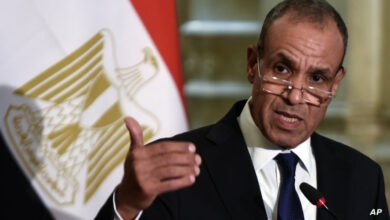
On behalf of the Zahi Hawass Foundation for Heritage and Antiquities, and at the invitation of the ladies presiding over the Nefertiti Salon, we are pleased to announce the publication of a document calling for the return of Queen Nefertiti’s bust, currently housed in Berlin’s museum (Neue Museum), to its homeland, Egypt, to be displayed in the Grand Egyptian Museum.
The timing of the release of the second document to recover Nefertiti’s bust coincides with a growing awareness among Europeans to atone for their colonial past of destroying African artifacts and plundering their treasures through force and terror. Every piece housed in European museums is a testament to the blood spilled alongside these artifacts and the tragedies of colonialism. French President Macron acknowledged this, stating that ‘we acquired Africa’s treasures and must return them to their countries.’ Greece and Ethiopia have also made serious demands for the return of their artifacts from European museums.
I announced the demand for the return of Queen Nefertiti’s bust to Egypt through the Nefertiti Salon, led by five female journalists: Nevin Al-Aarfi from Al-Ahram Weekly and the Ministry of Tourism and Antiquities’ media advisor, Amany Abdel Hamid from Al-Musawwar magazine, Camelia Atrees from Sabah El Kheir, Ala Abdel Hamid from the radio, and Mishira Moussa.
This salon was founded out of love for Queen Nefertiti, making it the most appropriate venue to announce the document calling for the return of the great Queen Nefertiti’s bust. I began by introducing the audience to the journey of searching for Queen Nefertiti’s tomb, which was met with an extraordinary response, filling the hall of Prince Taaz Palace.
I explained the excavations I conducted in the Valley of the Kings, specifically near the tombs of King Ay and King Amenhotep III. The Valley of the Kings is renowned for its many significant archaeological finds. We uncovered Tomb 65, containing equipment and tools used in building tombs. Currently, we are excavating in a new valley known as Wadi Khui. I found that the audience was thrilled by the initiative to recover Nefertiti’s bust.
I urge every Egyptian to visit my website (Hawasszahi.com) and sign the petition. Not only that, but we should encourage friends,family, and everyone we know to sign as well, aiming for one million Egyptian and foreign signatures. This will demonstrate to the Germans that this is a popular demand and a national campaign. Therefore, I want to disseminate this document so that every Egyptian knows there is a serious campaign to recover our stolen artifacts. Below is the published document calling for the return of the statue of Nefertiti.
Document calling for the return of the Nefertiti bust
On behalf of the Egyptian people and all those who passionately advocate for the return of Egypt’s looted heritage to its homeland, I formally request the return of the colored limestone bust of Nefertiti, registered at the Neues Museum in Berlin under the number (AM 21300). This unparalleled masterpiece, both historically and aesthetically, is currently housed in Germany. However, the time has come for its return to its homeland, Egypt.
An illicit departure
For many years, Egypt has been deprived of many of its most important ancient Egyptian artifacts,one of which is this 18th-dynasty bust that has never failed to attract countless visitors to the renowned Neues Museum in Berlin. Despite numerous calls for meaningful dialogue and requests to acknowledge how this unique artifact arrived in Germany, this petition aims to reinvigorate discussions for the return of this one-of-a-kind bust to Cairo and urge the German authorities to respond.
Egypt’s efforts to recover its artifacts over the past two decades have been commendable. From the United States to Europe, Egyptian authorities, with the assistance of international police forces and diplomatic bodies, have successfully recovered thousands of artifacts that were illicitly removed from the country. Therefore, this request is a logical outcome of our nation’s steadfast policy of demanding the return of any archaeological and historical pieces that have been illegally removed from the country, especially those that are unique.
Regarding the specific case of the Nefertiti bust, contemporary and subsequent records documenting the excavations and division of the archaeological finds, including the Nefertiti bust, confirm that the bust was removed from Egypt in direct violation of Egyptian laws in effect at that time. Since the first full publication of the Nefertiti bust, which only appeared more than a decade after its discovery in 1912 by Ludwig Borchardt, Egypt has made numerous attempts to recover this precious artifact.
Return the queen’s bust to its homeland
Although Nefertiti has served as “Egypt’s ambassador to Germany” for decades, her symbolic and cultural diplomacy is not limited to her physical presence in the Neues Museum. Even if she is returned to Egypt, travelers from all over the world, including German citizens and scholars, will still be more than welcome to study and visit her in her original homeland. As her bust represents a value that tells the story of our shared humanity, similar to the unique mask of King Tutankhamun, this story can be told from its original home, where millions of tourists from various countries visit Egypt and witness historical development at its best.
From a legal standpoint, Article 13(b) of the 1970 UNESCO Convention on the Means of Prohibiting and Preventing the Illicit Import, Export and Transfer of Ownership of Cultural Property calls upon all States Parties to the Convention—which Germany ratified in 2007 and Egypt accepted in 1973—to “ensure that their competent authorities cooperate in facilitating the prompt return of cultural property illegally exported to its country of origin.”
This Convention was further enhanced by the “Appeal for the Return of Irreplaceable Cultural Property to the Countries of Its Origin” by Mr. Amadou-Mahtar M’Bow, the former Director-General of UNESCO, in 1978. It called upon “those responsible for the conservation and restoration of works of art to facilitate, by their advice and actions, the return of such works to the countries in which they were created.” Indeed, the Appeal also emphasizes the “return of art treasures which best represent their culture.”
Egypt has been deprived of the bust for 102 years. It has never been returned to Egypt, not even on loan, even when it was moved to another location in Germany, and despite the context of the two world wars. Nevertheless, Egypt greatly appreciates the care and efforts exerted by the German government in preserving and displaying the 3,400-year-old colored limestone statue of the Queen. Building on the long-standing and friendly relations between our two governments, the Egyptian government is confident that the German authorities will assist in facilitating its return.
We sincerely hope to receive a positive response soon, which will be greatly appreciated by the Egyptian government and people. Therefore, we request the German Minister of Culture, the Prussian Cultural Heritage Foundation, and the administration of the Neues Museum to give due consideration to this petition and respond favorably to the request for the return of Queen Nefertiti’s bust.
The Egyptian government, people, and citizens around the world are eager to see this unique treasure returned to its rightful owners—the Egyptian people. Therefore, we appeal to the international community to demand the return of this statue to us, as the world knows that this magnificent artifact is purely Egyptian and its natural place is the Grand Egyptian Museum, where it will be exquisitely cared for.
In light of countless countries demanding the return of their cultural heritage, Egypt is no exception and is no less deserving. The signatories of this petition support the aforementioned request to recover the looted heritage.




